Interactive floorplan: Base Valley House, Japan
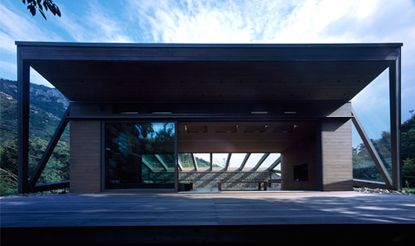
Hiroshi Sambuichi`s ideas on making architecture are as far removed from those of his Tokyo contemporaries as the location of his Hiroshima-based office. With his latest project, a house for a couple and their three children, Sambuichi sets an example for the proper use of natural energy sources, showing that good design is first and foremost all about getting the balance between the building and the earth, right.
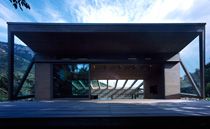
Take a deeper look at the Base Valley house
Sambuichi has always been committed to studying extensively the local climate of each project’s location, before developing the design, and this often involves on-site observations that can take up to an entire year. This is followed by careful elaboration of the results into shapes and spaces made out of high-quality natural materials like Japanese cypress, chestnut wood and crushed stone; a procedure which justifies his growing reputation for producing indigenous architecture, strongly linked with the local landscape, a rarity in-between the concrete examples of modern Japan.
Base Valley looks perfectly natural among its surroundings. “A close examination on how changing wind directions and intensities in daylight influences the site, enables me to understand what kind of architecture is really needed on each location”, explains Sambuichi, when asked about the starting point of his design, which led to the transformation of the site into the family’s 100-m2 permanent base, where from they enjoy the beauty of the adjacent river and mountains.
The dramatic location, the edge of an immense 12,000-m2 river valley plain, surrounded by steep cliffs, means the house has to deal with strong winds from the sea and down the mountain. Instead of trying to resist the harsh climate, Base Valley both protects its inhabitants from the challenging weather conditions, and also respects and makes the most out of the local climate. To make the best use of the wind blowing through the valley the architect decided on a 2,260 m wide cut, a wind street, slicing the entire building volume in north-south direction; this allows the air to flow through the interior. Next, he nestled four bedrooms and a sunroom in the ground, utilizing the earth’s warmth to regulate the indoor temperature. The scheme completes with a living area, dining room and kitchen on the ground level, which is topped off with a slanted glazed roof that follows the slope of the mountain.
“In summer, the subterranean sun room gathers the valley wind so that each bedroom gets a breeze of fresh air, while in winter the glass tent collects the necessary solar heat”, says Sambuichi, explaining the energy efficiency of his natural air-conditioning `machine`. With all windows open, the residents can enjoy the privilege of hearing and feeling the nearby river and falling forest leaves, making living inside Base Valley as close to earth as it can get.
Wallpaper* Newsletter
Receive our daily digest of inspiration, escapism and design stories from around the world direct to your inbox.
-
 A new Oxford Street pop-up celebrates IKEA's blue bags
A new Oxford Street pop-up celebrates IKEA's blue bagsIKEA's iconic blue bag gets its own pop-up concept store, the 'Hus of Frakta'.
By Smilian Cibic Published
-
 Audemars Piguet and Kaws have created the Royal Oak Concept watch we didn't know we needed
Audemars Piguet and Kaws have created the Royal Oak Concept watch we didn't know we neededThe Audemars Piguet x Kaws Royal Oak Concept Tourbillon 'Companion' is slick wrist-worn art
By Thor Svaboe Published
-
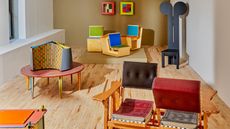 A friendly rivalry coloured by kinship: Wendy Maruyama and Tom Loeser on their two-artist show
A friendly rivalry coloured by kinship: Wendy Maruyama and Tom Loeser on their two-artist show'I wanted to make furniture, just not traditional furniture, but weird furniture,' says Wendy Maruyama on ‘Colorama’, a two-artist show presented at design gallery Superhouse (until 11 January 2025)
By Gregory Han Published
-
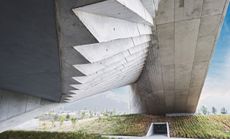 Tadao Ando: the self-taught contemporary architecture master who 'converts feelings into physical form’
Tadao Ando: the self-taught contemporary architecture master who 'converts feelings into physical form’Tadao Ando is a self-taught architect who rose to become one of contemporary architecture's biggest stars. Here, we explore the Japanese master's origins, journey and finest works
By Edwin Heathcote Published
-
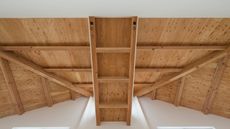 The Kumagaya House in Saitama is a modest family home subdivided by a soaring interior
The Kumagaya House in Saitama is a modest family home subdivided by a soaring interiorThis Kumagaya House is a domestic puzzle box taking the art of the Japanese house to another level as it intersects a minimal interior with exterior spaces, balconies and walkways
By Jonathan Bell Published
-
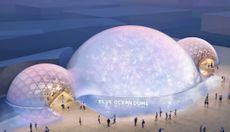 Shigeru Ban wins 2024 Praemium Imperiale Architecture Award
Shigeru Ban wins 2024 Praemium Imperiale Architecture AwardThe 2024 Praemium Imperiale Architecture Award goes to Japanese architect Shigeru Ban
By Ellie Stathaki Published
-
 Pace Tokyo is a flowing Sou Fujimoto experience that ‘guides visitors through the space’
Pace Tokyo is a flowing Sou Fujimoto experience that ‘guides visitors through the space’Art gallery Pace Tokyo, designed by Sou Fujimoto in a Studio Heatherwick development, opens in the Japanese capital
By Danielle Demetriou Published
-
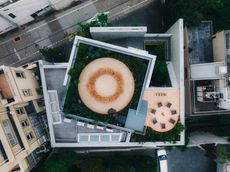 How the Arc’teryx Tokyo Creation Centre is all about craft, openness and cross-pollination
How the Arc’teryx Tokyo Creation Centre is all about craft, openness and cross-pollinationArc’teryx launches its Tokyo Creation Centre, a hub for craftsmanship designed by Torafu Architects, embodying the brand's ethos
By Daniel Scheffler Published
-
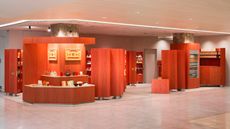 Craft store Nakagawa Masashichi Shoten at Narita airport is an ode to travel
Craft store Nakagawa Masashichi Shoten at Narita airport is an ode to travelThe Japanese homewear and craft store Nakagawa Masashichi Shoten wows with bright interior made of moveable ‘trunks’ by Tokyo-based studio 14sd designs
By Joanna Kawecki Published
-
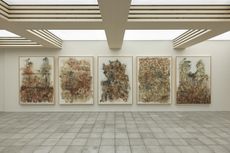 Space Un celebrates contemporary African art, community and connection in Japan
Space Un celebrates contemporary African art, community and connection in JapanSpace Un, a new art venue by Edna Dumas, dedicated to contemporary African art, opens in Tokyo, Japan
By Nana Ama Owusu-Ansah Published
-
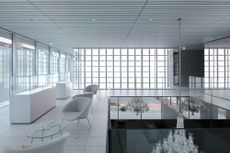 Monospinal is a Japanese gaming company’s HQ inspired by its product’s world
Monospinal is a Japanese gaming company’s HQ inspired by its product’s worldA Japanese design studio fulfils its quest to take Monospinal, the Tokyo HQ of a video game developer, to the next level
By Ellie Stathaki Published